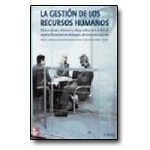Looking for more insights?
Sign up to stay informed about our latest article releases.
Given the uncertainty surrounding the current economic crisis and their own deteriorating balance sheets, many companies have not hesitated to make cuts in their workforce without realizing that in most cases, such measures will not solve fundamental problems and will more likely worsen the labor climate and worker motivation. To help companies avoid this kind of mistake, Simon L. Dolan, professor of human resource management at ESADE, and Ramón Valle Cabrera of the Pablo de Olavide University have written Managing Human Resources: How to Attract, Retain and Develop Successfully Human Capital During a Time of Transformation (Madrid, McGraw Hill, 2007).

Sign up to stay informed about our latest article releases.